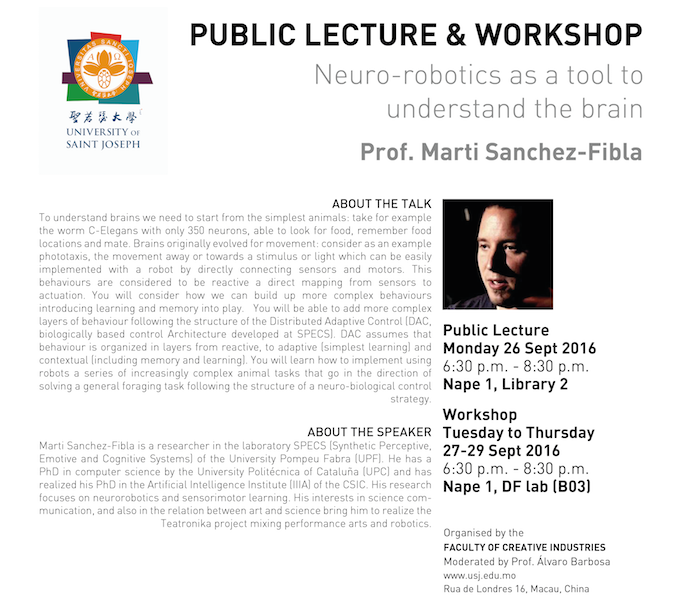Public Lecture: Neuro-robotics as a tool to understand the brain

Public Lecture: Neuro-robotics as a tool to understand the brain
26
Sep
Public Lecture: Neuro-robotics as a tool to understand the brain by FCI at Nape 1, Library 2, on 26th September 2016

About the Talk
To understand brains we need to start from the simplest animals: take for example the worm C-Elegans with only 350 neurons, able to look for food, remember food locations and mate. Brains originally evolved for movement: consider as an example phototaxis, the movement away or towards a stimulus or light which can be easily implemented with a robot by directly connecting sensors and motors. This behaviours are considered to be reactive a direct mapping from sensors to actuation. You will consider how we can build up more complex behaviours introducing learning and memory into play.
You will be able to add more complex layers of behaviour following the structure of the Distributed Adaptive Control (DAC, biologically based control Architecture developed at SPECS). DAC assumes that behaviour is organized in layers from reactive, to adaptive (simplest learning) and contextual (including memory and learning). You will learn how to implement using robots a series of increasingly complex animal tasks that go in the direction of solving a general foraging task following the structure of a neuro-biological control strategy.
About the Speaker
Marti Sanchez-Fibla is a researcher in the laboratory SPECS (Synthetic Perceptive, Emotive and Cognitive Systems) of the University Pompeu Fabra (UPF). He has a PhD in computer science by the University Politécnica of Cataluña (UPC) and has realized his PhD in the Artificial Intelligence Institute (IIIA) of the CSIC. His research focuses on neurorobotics and sensorimotor learning. His interests in science communication, and also in the relation between art and science bring him to realize the Teatronika project mixing performance arts and robotics.
Date: 26th September 2016
Venue: Nape 1, Library 2









